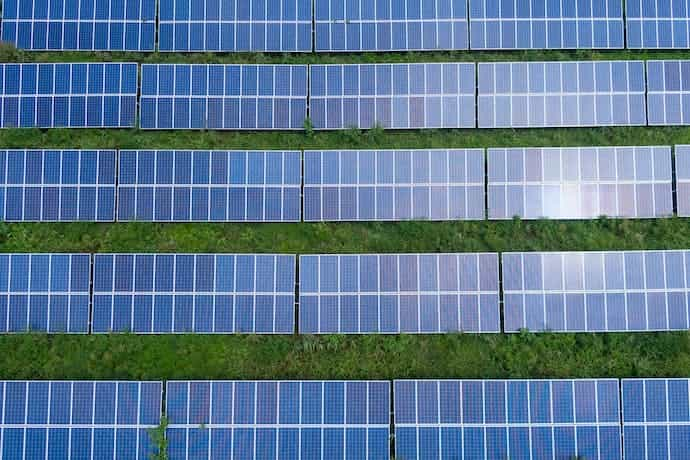Smart Grids – The Electric Grid at the Hour of the Data Revolution
Let’s take a look back at the development of smart grids and the opportunities offered to utilities by using data coming from these new smart electricity distribution networks.

Smart grids, or intelligent electrical networks, are attracting increased worldwide attention. They respond to the challenges posed by the production and distribution of electrical energy. Let’s take a look back at the development of smart grids and the opportunities offered to utilities by using data coming from these new smart electricity distribution networks.
In the United States, the current electrical grid suffers chronic underinvestment. Still largely based on 20th century technology, efficiency is not one of the grid’s defining characteristics. However, according to “The Smart Grid: An Introduction” written by the Department of Energy, by making the grid itself just 5% more efficient, energy savings could be the equivalent of taking 53 million cars off the road. Smart Grids can play a role in building this efficiency.
The idea of building Smart Grids is not limited just to the United States: countries like France, Japan, Italy, and Sweden are also increasingly looking towards them.
What’s at stake in developing Smart Grids is not limited to increasing the network’s efficiency, but modernizing entire national electrical infrastructure. In the United States, France and beyond, electric networks are evolving to respond to the evolutions in the energy landscape.
Changes to the Energy Landscape
Actors in the energy industry will face multiple challenges regarding the production, transportation, distribution, and consumption of electricity.
Increases in Demand for Electricity
Consumption of energy is increasing in almost every country in the world with several phenomena such as increased individual consumption and demographic growth. Long-established practices, such as electric heating and air conditioning, are seeing their use increase, all while new technologies such as the electric car are emerging.
Development of New Energy Sources
The treasure that is new sources of renewable energy, such as wind and solar power, nonetheless poses a challenge in terms of integration into existing energy distribution infrastructure.
Intermittent Sources of Energy
Because the wind is not permanently howling and the sun is not always out, solar and wind energy are by nature intermittent. It thus is necessary to put in place specific methods of managing energy in order to compensate for the variations in energy production innate to renewables.
Increasingly Decentralized Energy Production
These new types of energy exist on top of the more traditional thermal, nuclear, and hydroelectric sources. We are witnessing a multiplication of structures that produce electricity, leading to additional complexity in managing distribution infrastructure. Small, medium, and large energy producers, energy produced constantly, and energy produced intermittently all must be reconciled.
From Consumers to Consumer-Producers
On another note, energy consumers are also becoming energy producers themselves, equipped with solar panels on their roofs, for example. They must be connected to the grid and be able to inject the electricity they produce. The existing electrical network, conceived of originally only for the distribution of electricity, does not suffice.
New Objectives in the Fight Against Climate Change
Lastly, the biggest question remains of the fight against greenhouse gasses by improving the energy efficiency of the grid, in reducing electric consumption and allowing for streamlined energy management.
With regards to the European Union, the 2030 climate and energy framework, adopted by EU leaders in 2014, fixed three main objectives for 2030:
- Reduction of greenhouse gases by 20% of 1990 levels;
- 20% of energy consumption in the EU made up of renewables;
- Improvements in energy efficiency.
Faced with these challenges, it was necessary to evolve the functioning of traditional electric networks, from which came the development of smart grids.
Smart Grids: A Definition
Smart grids are designed to optimize energy production, distribution and consumption. It is a way of integrating into the existing electrical infrastructure (the power grid) information and communication technologies to make them “smart.”
More precisely, smart grids must:
- Reduce the costs associated with the production and distribution of electricity;
- Improve the energy efficiency of the entire grid;
- Smoothen spikes in energy production;
- Improve the flexibility of the grid in equalizing the supply and demand of electricity at any moment;
- Improve the reliability of the grid.
Because the smart grid aims at improving the performance of urban services, it is often seen as a key component of the Smart City.
Making the Grid Smart
Smart girds must take into account the entirety of the elements constituting the electric grid (production units, materials for energy storage, power lines, etc.) and ensure coherent and optimal functioning.
To do this, it is necessary to have control of and understand the energy distribution chain from one end to the other by continuously collecting information on the ongoing operations. Measuring and control technologies are deployed across the electric grid and connected to a data network. At one end of the chain, intelligent electricity meters measure the consumption of the users and send the information to the power company.
Ensuring Communication Between Different Elements of the Smart Grid
Managing the Increasing Complexity of the Electric Grid
As we’ve seen, the rise in renewable energy sources constitutes a challenge for traditional electric grids. Energy production is decentralized and multiplied. Furthermore, there is the challenge of the intermittency of renewable energy sources.
This complication to electricity production necessitates permanent communication between the different elements of the system to know of and redistribute available energy at any moment.
Adapt Demand to Supply
For traditional electricity grids, the supply adapts continuously to the demand. This flexibility in the supply sometimes has a significant financial and environmental cost when it means starting a thermal power center to respond to a spike in demand. Smart grids propose, in addition to a flexibility of supply and demand, flexibility in the demand based on the supply.
Making demand flexible implies the anticipation of increases in consumption and in encouraging consumers to defer their energy consumption to when it is necessary. This also means that consumers can send and receive information from the electric grid.
Establishing two-way Communication
For the two above-mentioned reasons, electric networks must allow actors and different parts of the grid to exchange information on a model that is both top-down and bottom-up. One-way communication currently in place across traditional electrical grids makes room for, on smart grids, two-way and multilateral communication.
For example, a wind farm communicates with the energy distributor its production thanks to smart meters. On the other side of things, consumers can follow their consumption via dedicated web applications. Services like Opower allow energy companies to communicate with clients, the goal being to incite them to consume electricity when it is most readily available.
Smart Grids: Where Are We Today?
A new buzz term if there is one, smart grids evoke many hopes and fantasies. The analyst Jeremy Rifkin goes even so far as to say it is a pillar of the Third Industrial Revolution, as he would to call it.
Today, we are still far from an electrical system completely integrated and perfectly optimized. Certain necessary technologies to make these networks more intelligent are still in deployment phase. Numerous smart grid projects are still in the research and development phase. However, the first initiatives are there. Already, segments of the grid have been made intelligent and their data are starting to flood our systems.
It is now a question of how to take advantage of the potential offered by this data to discover if smart grids will hold true to their promises. In part two of this article on Smart Grids, we will look at how to take advantage of the data generated by Smart Grids.



